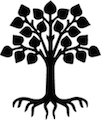The real voyage of discovery consists, not in seeking new landscapes, but in having new eyes.
-Marcel Proust
After the Quarantine and enactment of mandatory cremations of infected bodies, Laoguna developed the tradition of memorializing late relatives by keeping their eyes–an emblem of their souls. The departed Laogunian was thought to receive a new pair of eyes upon entering the afterlife. The process, called “sighting” has long since been derided by Riloans of other districts, calling Laogunians who follow the tradition “Hollowers” after the hollow sockets left behind.
The manner of storing them became more and more elaborate over time, as did the tradition of representing the personality and the class of the person through decorations on the urn. Eye preservation techniques also evolved over the ages, and few early artifacts from the plague era exist. Nowadays, experienced morticians in Laoguna provide packages for every price point, including urns carved with increasing levels of craftsmanship.
This artifact (exhibit 1) comes from the Tali family, belonging to Teo Tali who died on his 87th birthday in the year 1974. Photo taken with permission from Ela Nali, his granddaughter, in October 2014.
When Nara Leoni was born blind to arguably the richest and most influential family in Laoguna, a shift took place in the tradition.
In 1984, Nara Leoni was born to the Leoni Family, the wealthiest and arguably the most influential family in Laoguna. But, Nara was born blind. After a difficult childhood and learning to read and “see” with his hands, Nara became one of the most acclaimed sculptors of Riloa. After his death at the young age of 26, the Leoni family adapted the Laogunian tradition to better reflect his particular circumstances (exhibit 2). This led to a new era in Laogunian memorialization. Most famously, Jani Ara requested in his will that his whole head be memorialized, leading to a legal debate (Ara v. Riloan Supreme Court).
Collaborators
Trisha Williams, and Spandana Myneni





